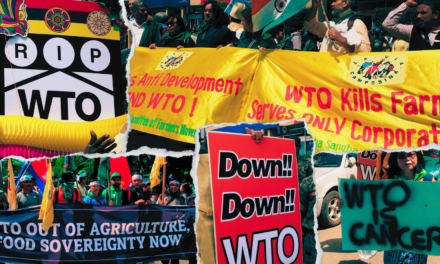By Jacques-chai Chomthongdi*
Thailand is known as one of the top food exporters in the world, particularly in rice. But a study on Thailand shows that while its rice exports are increasing, farmers do not benefit from this success. Farm-gate prices have not increased over the last decade. The stagnation in real income has been accompanied by a sharp rise in the debt burden of the rural households. In short, more export does not lead to an increase in farmers’ welfare, or at least, not for Thai rice producers.
Over a long period of time, “trade liberalisation” has been projected as a magic solution to the problems confronted by developing countries. In recent years, “trade liberalisation” has not only been seen as good for economic growth but also as good for the poor. The argument goes like this: exports can generate hard currencies needed for development. Access to markets in the North not only helps to generate national income but also more jobs and higher prices for local products, hence leading to the alleviation of poverty. This assumption very much influences the focus and the direction of today’s international trade negotiations both at multilateral and bilateral levels. Countries, North and South alike, aim to open up other countries’ markets in an attempt to increase their exports. In agriculture, it is believe that opening up of the market in Northern countries will benefit Southern countries since, in general, the later has the comparative advantage in this sector.
Let’s take this argument a little bit further. For instance, if developed countries genuinely open up their markets and developing countries are able to increase their agricultural exports, will these changes benefit the rural producers and help improve their living standard? This paper takes the case of Thailand, the country that is perceived as a successful story of the export-led growth model, to address this question.
Read Full article in PDF format>>>









